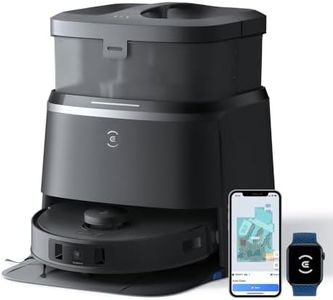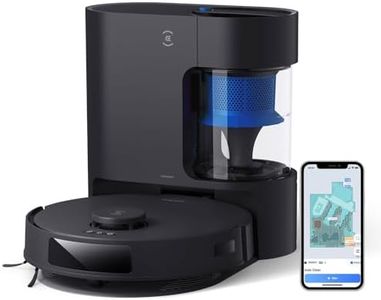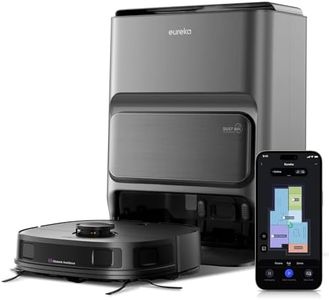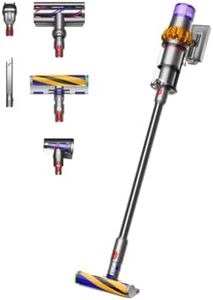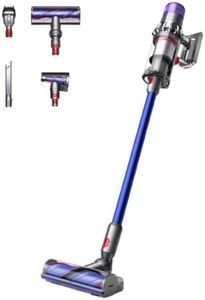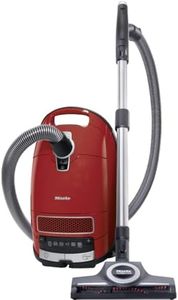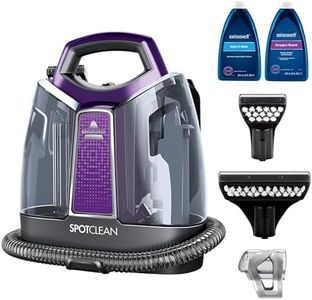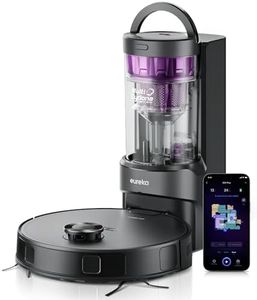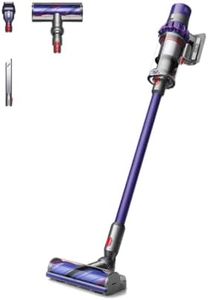We Use CookiesWe use cookies to enhance the security, performance,
functionality and for analytical and promotional activities. By continuing to browse this site you
are agreeing to our privacy policy
10 Best Vacuum Cleaners
From leading brands and best sellers available on the web.Buying Guide for the Best Vacuum Cleaners
Choosing the right vacuum cleaner can make cleaning your home much easier and more effective. With so many types and features available, it helps to understand what really matters for your needs. Start by thinking about the size of your home, whether you have mostly carpets or hard floors, if you have pets or allergies, and your comfort with lifting or maneuvering a vacuum. You’ll also want to consider storage space and ease of maintenance. Knowing these factors will help you pick a vacuum that fits seamlessly into your lifestyle.Type (Upright, Canister, Stick, Robot, Handheld)The type of vacuum refers to its design and intended use, and each type suits different cleaning situations. Upright vacuums are great for deep cleaning large carpeted areas and stand up by themselves, while canister vacuums are more flexible for stairs and hard-to-reach spots. Stick vacuums are lightweight and convenient for quick clean-ups or small spaces, robot vacuums clean autonomously and work well for daily maintenance, and handheld vacuums are best for small spills or car interiors. Select the vacuum type that matches your home’s size, floor types, and lifestyle: larger homes with lots of carpet often suit upright or canister models, while apartments or those who want convenience may prefer stick or robot vacuums.
Suction PowerSuction power indicates how effectively a vacuum picks up dirt and debris. Higher suction power is good for deep cleaning carpets, while moderate suction often suffices for hard floors. Suction is sometimes measured in Air Watts or similar ratings. For homes with pets, thick carpets, or high-traffic areas, higher suction is valuable. For mostly hard floors or light cleaning, a lower suction level is generally enough and may be quieter or use less energy.
Filtration (HEPA, Standard, Washable Filters)Filtration describes how well the vacuum traps dust, allergens, and small particles. HEPA filters capture extremely small particles, making them ideal for allergy sufferers or pet owners. Standard filters are fine for general use, while washable filters save money and are easy to maintain. Pick vacuums with HEPA filtration or upgraded systems if allergies or asthma are a concern or if you have pets; for average cleaning, a standard or washable filter may suffice.
Bagged vs. BaglessA vacuum can be either bagged or bagless, affecting how you collect and dispose of dirt. Bagged vacuums use replaceable bags and are better at trapping dust, often recommended for allergy sufferers. Bagless vacuums use a dust bin that you empty and clean, saving the cost and hassle of buying bags but sometimes releasing dust during emptying. Bagged models are best for minimizing dust exposure, while bagless are convenient and cost-efficient for regular use.
Weight and ManeuverabilityThis refers to how heavy the vacuum is and how easily it moves around your home. Lightweight models are easier to carry up stairs, use on multi-level homes, or handle for longer periods. Heavier vacuums often have more suction and large capacity but can be cumbersome. Choose a lighter, more maneuverable vacuum if you have stairs, limited strength, or need quick, regular cleans; heavier models suit larger spaces with mostly flat surfaces.
Attachments and AccessoriesAttachments like crevice tools, pet brushes, and upholstery tools expand your vacuum’s versatility. More attachments can help clean furniture, drapes, tight corners, and pet hair. Consider the types of messes and surfaces in your home: homes with pets, children, or varied surfaces benefit from a range of accessories, while simpler needs may only require basic tools.
Corded vs. CordlessCorded vacuums plug into the wall, providing uninterrupted power, which is good for longer or intensive cleaning sessions. Cordless vacuums run on batteries and offer more freedom and portability, though they have limited runtime before needing a recharge. Go cordless for convenience and flexibility in smaller spaces or if you need quick clean-ups, and stick with corded for large homes or deeper, uninterrupted cleaning.
Bin or Bag CapacityCapacity refers to how much dirt the vacuum can hold before needing to be emptied or a bag changed. Higher capacity means less frequent emptying and is helpful in larger homes or for families and pet owners. Small capacities are fine for quick cleanups or single-person households. Pick a capacity that matches your cleaning frequency and home size.

